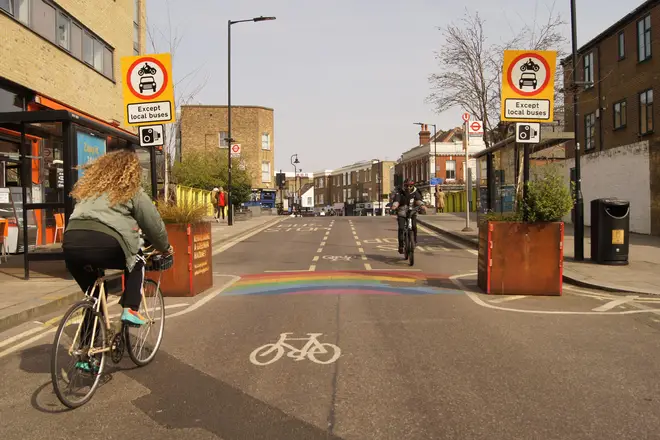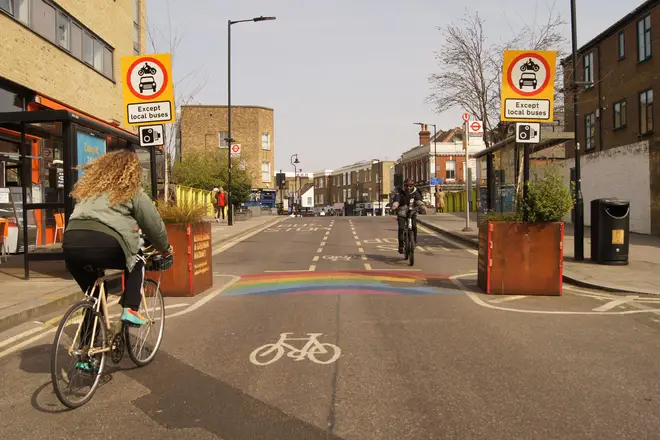
Ian Payne 4am - 7am
25 January 2023, 16:20 | Updated: 25 January 2023, 16:48

Hackney council set to ban most vehicles from three quarters of its roads, as it adds to the high number of Low Traffic Neighbourhood measures already in place.
The local government authority signed off plans to turn 75 percent of its streets into LTNs, in what it describes as the UK's"most ambitious plan” to take on toxic air.
Half of Hackney borough's roads are already covered by the traffic measures.
Mayor of Hackney Philip Glanville said the borough's Three Year Local Implementation Plan would see the area having the largest number of car restrictions, cycle parking, and public electric vehicle chargers in London.
He added: “This is the most ambitious plan in London, if not the most ambitious in the country, building on an incredible track record in this borough.”
Read more: Sir Keir Starmer blasts Sunak as ‘too weak’ to sack Zahawi over tax affairs at fiery PMQs
Dalston, Hoxton, Chatsworth Road, Craven Walk, Cazenove Road and Stamford Hill will have the traffic control schemes installed between now and 2025/26 as part of the proposals.
The town hall was given £19million by the Government’s Levelling Up Fund which will be used to fund a redesign of Pembury Circus junction and make five acres in Hackney Central “greener”, the Evening Standard reported.
London Fields, Hackney Downs and Stoke Newington already have schemes in place, which only cyclists, emergency services and bin lorries are allowed to pass through.
Physical filters are used such as planters, traffic cameras or bollards to prevent vehicles from using some smaller streets in residential areas through-routes, though pedestrians and cyclists aren't affected.
Drivers who hold blue badges and live outside the areas where the scheme is in place will also be permitted to pass through some of the vehicle filters.

Critics of LTNs have claimed that barriers on the road move traffic from a few streets, which are often wealthier, into neighbouring areas.
Residents group Hackney Together said: “There is no justification for safer, quieter roads for some at others’ expense,”
Research published earlier this month by Westminster University’s Active Travel Academy and climate charity Possible, found the measures in place in the capital “substantially” brought down motor traffic in residential areas without much impact on main roads nearby.
The council says it has seen a 40 percent drop in traffic across its four largest recently installed LTNs, and 2 percent fewer vehicles on boundary roads.
Mete Coban, Hackney’s environment and transport lead, said the LTNs would be created with input from residents, and businesses across the areas impacted by them had been consulted.
“We also want to go back to those areas where we have made schemes permanent to make further improvements,” he said. “That’s looking at the Hackney Downs LTN, London Fields LTN, some of those concerns residents have been raising for us.”
He added: “We promise to be at the forefront of the fight against climate change and creating a greener, healthier Hackney as a result.”
As part of the plan, thousands of new storage spaces for bikes will be put in place, as well as shared car clubs, and safer walking routes.
Hackney “School Streets”, on which temporary restrictions come into effect when pupils are arriving and leaving school, will also be expanded from 49 to 60.